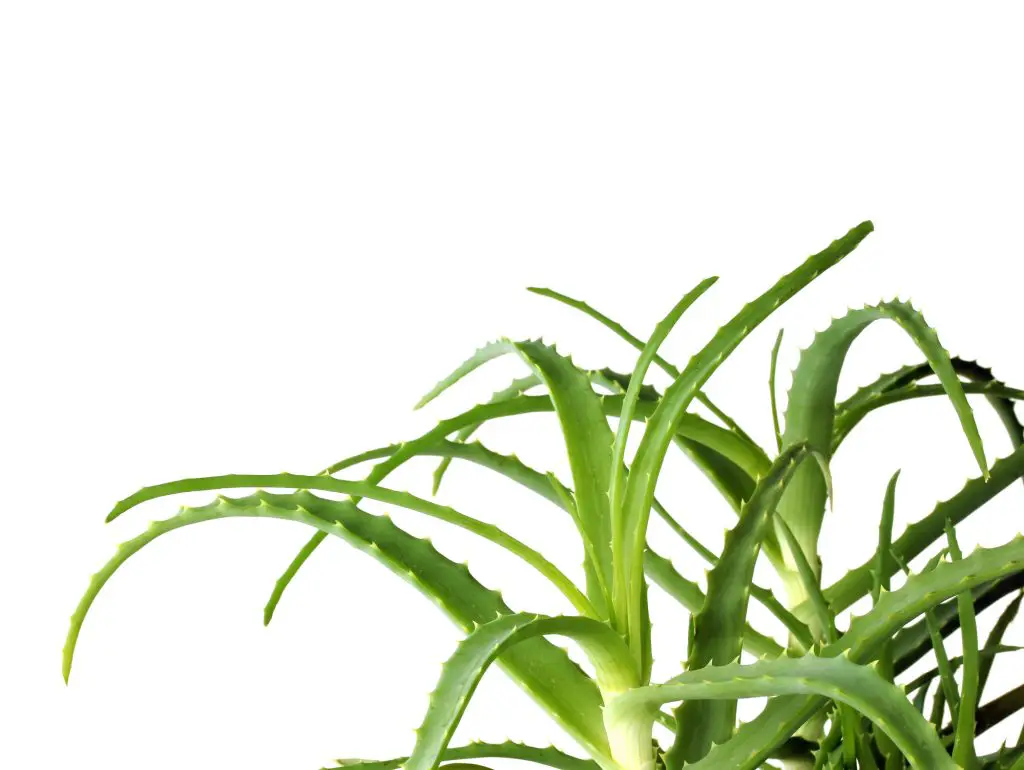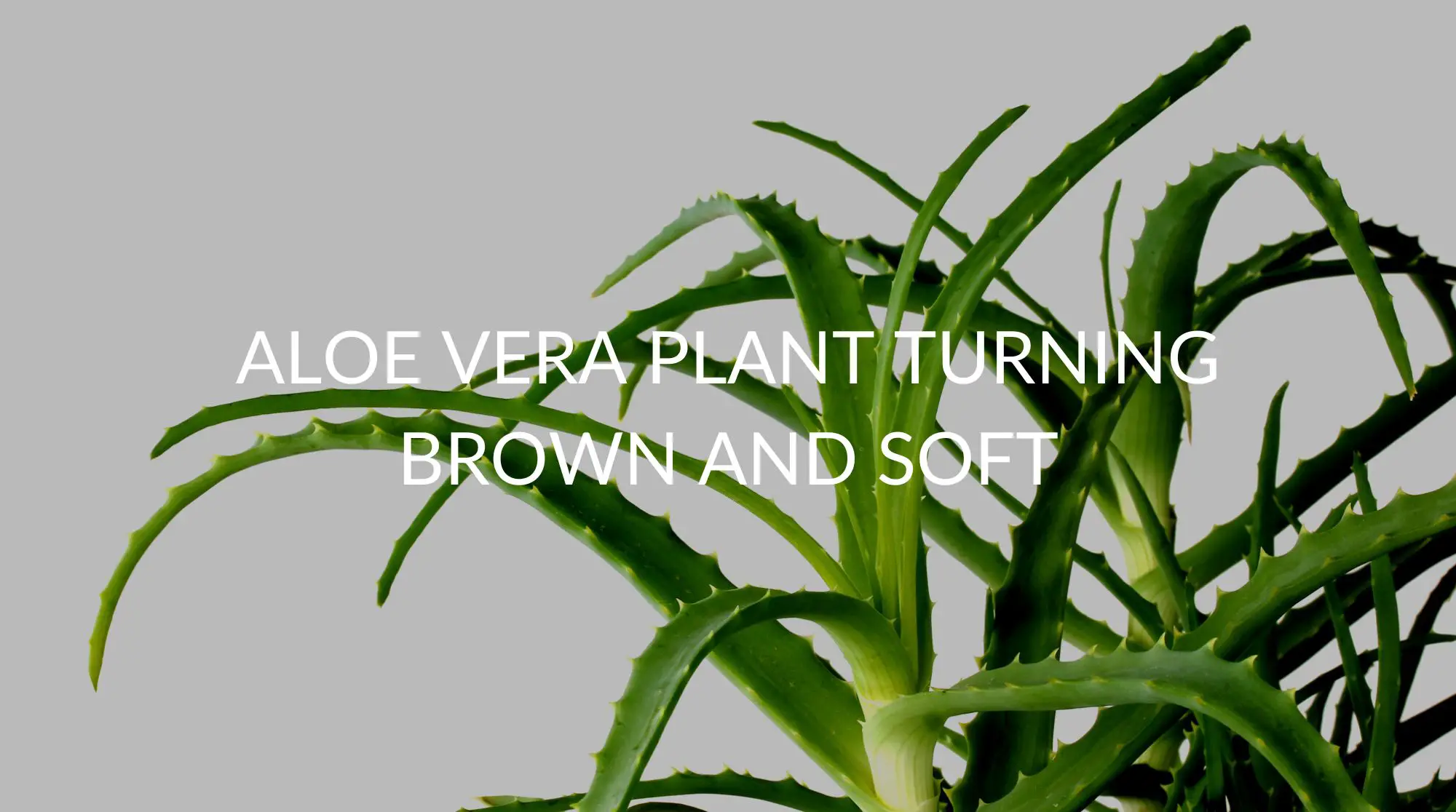Aloe leaves may turn brown due to overwatering, poor drainage, underwatering, over-fertilizing, or inadequate light and temperature conditions. You may need to repot your plant or move it to a new location to fix the problem.
Aloe can be a fairly easy-going plant when it is growing in the right conditions, though sometimes it takes a little while to determine what those conditions are. If you notice your aloe is turning brown or the aloe leaves are soft or rotting, you will need to make some changes.
It may not be clear at the beginning what is causing the problem with your aloe, but if you try these solutions, you should be able to get your aloe plant green again with a little patience.
Why Is My Aloe Turning Brown?
Overwatering
Like with almost all succulents, overwatering may be the reason your plant isn’t thriving. Typically watering issues are the number one thing to look at when trying to determine what is making your plant look anything other than its vibrant, green self.
Aloe is easy to overwater because it needs so little water (but is sometimes hard to leave alone!) and it tolerates overwatering for a long time before it turns brown or experiences root rot. You may have been overwatering for years and not know it, but then suddenly, you notice your plant no longer has roots.
Poor Drainage
Poor drainage goes along with overwatering since it is a cause of the root damage that may cause your aloe to turn brown.
Even if you aren’t overwatering your aloe, if it is sitting in a pot with regular potting soil (not cactus or succulent soil), or if the pot has no drainage holes, or if the plant is sitting in a dish of water, it will not be able to absorb the excess water, and the roots will die.
Underwatering
While not as common as overwatering with succulents, underwatering may be the culprit in some cases. If you forget about your aloe for months at a time or are away from home for long periods, your aloe may turn brown at the tips, and the leaves may show wilting or puckers.
If your plant looks visibly dried out, or the soil is bone dry, your plant should be watered immediately.
Over Fertilizing
Aloes are fairly hearty, though they are also sensitive to chemicals in the environment. If you have been fertilizing your plant for several years and not repotted it in fresh soil, you may have chemical or salt buildup in the soil that is affecting your plant.
If you notice white crust on the top of your soil, this may also indicate salt buildup. You will need to repot in fresh soil or flush out the soil with water.
If your aloe is growing next to plants that you spray with chemicals such as fertilizer, herbicide, or fungicide (such as your lawn), your aloe may develop brown spots if it is exposed to chemicals. Make sure your plant is growing away from airborne chemicals.

Sunburn
Aloe likes bright, indirect light best, though it thrives in a variety of conditions. Many aloe plants do not like bright, hot sun for long periods, however. If your plant is growing in a hot, sunny window, it may be getting too much light. This may lead to it looking faded or eventually turning brown.
Move the plant away from the window by a foot or so, or change to a different location.
Cold
Aloe is a succulent that doesn’t tolerate extreme cold. Your plant will do best in around 55 to 85℉. While cold is often not a reason for browning leaves, it could be contributing to your plant having to work a little harder to survive, making it susceptible to other problems like root rot.
Pests
Aloe is not susceptible to many pests, though, at times, it can become infected with mealybugs, gnats, or mites. A plant that is grown in healthy conditions should be able to fight off pests on its own, though occasionally, a weak plant will be infected.
Why Is My Aloe Plant Turning Soft?
Overwatering
The most likely reason your aloe is turning soft or mushy is overwatering, so this is the first place you should make changes.
If aloe sits in damp soil, it cannot absorb all the water, and its delicate roots will begin to rot. Once the roots start to rot, the plant itself will turn from plump and firm to spotted with mush.
Don’Don’ter your aloe more than once a week–probably; it will be closer to every 2-4 weeks, depending on the season.
Lack of Sunlight
Aloe (or any plant) that isn’t getting adequate sun will not be able to absorb water and nutrients as efficiently as one grown in proper conditions. If your aloe is living in poor light, it may turn mushy because it isn’t growing and thriving.
Even if you stop watering it, you may notice it doesn’t absorb water readily. In this case, you will need to move your plant to a window or spot with brighter light. Aloe can withstand the full sun for a few hours, though you don’t want it to get sunburned by bright southern light for too many hours.
Improper Pot
You may need to put your aloe in a pot that allows water to evaporate more readily. Terra cotta or unglazed porcelain are typically the best choices. Make sure your plant doesn’t have an external or decorative pot that is not porous–this might cause mold or bacteria to build up inside the decorative pot.
You will not want your aloe sitting in water for long periods, so make sure it isn’t placed in a dish of water (this is not the way to water your aloe).
Pots that don’t drain adequately will almost certainly cause root rot in an aloe.
Improper Soil
If you planted your aloe in potting soil left over from your other houseplants, you might pay for it with a mushy aloe that isn’t thriving. Aloes need sandy, well-draining soil like cactus or succulent soil.
Pests or Disease
It’s rare, but your rot may be caused by a bacterial infection or fungus. If this is the case, you will need to keep your plant away from other plants and repot it into a clean pot with fresh soil.
How To Save an Aloe Vera Plant Turning Brown and Soft
Let Your Aloe Dry Out
If you pull your aloe out of the pot and notice that the soil is very damp, you may want to let your aloe sit out of its pot until the soil is able to dry out.
Inspect the roots for any root rot, which would be indicated by black or brown roots that are mushy to the touch and may have a rotten or unpleasant odor. You can trim these dead roots away with clean scissors or shears.
Once your aloe plant has had a day or more to rest, it will be ready to put back in a pot. You may want to take this opportunity to repot in a new pot with fresh soil, or at least add some fresh soil into the existing pot.
Repot Your Aloe
It is possible that your aloe has outgrown its pot. If it is starting to droop or fall over, or its roots are compacted in the pot, you will need to repot. You may notice roots growing out of drainage holes or around the bottom of the pot–this is typically a sign that the plant needs to be repotted.
Fresh soil may be just the thing your plant needs, especially if the soil has been overwatered and damp for a long time.
Make sure your pot has drainage holes and is made from a porous material that will allow water to evaporate.
You don’t need to place a layer of pebbles in the bottom of the pot if you are using sandy, porous soil. If overwatering or root rot is a problem, you may want to mix standard cactus or succulent soil with additional perlite to improve drainage.
Move Aloe To A Bright Location (But Not Too Sunny)
If you suspect your aloe isn’t getting adequate light, you may want to change its location and wait a week or so to see if the plant perks up a little.
If the plant is outdoors in bright sun, it may be getting sunburned. You can move the plant indoors to a south or west-facing window with bright light. (Keep in mind you may have to water your plant more or less if it is now indoors.)
You can also move your plant outdoors if it will get better light; just make sure to bring it in anytime the temperature drops below around 55 degrees.
Keep Aloe Away From Cold
If your aloe is near an open window, a drafty door, or an air conditioning vent, it may be exposed to drafts. This may hamper the aloe and affect its ability to absorb water. Make sure your plant is in a safe place with constant temperatures.
Inspect For Pests or Diseases on Aloe
Look for brown or rusty spots on the leaves and prune away any affected parts with clean shears. If you find pests, make sure you move your aloe away from other plants.
Inspect the roots as well, and cut away any diseased parts.
If you see pests, wipe them off with a damp paper towel with dish soap or rubbing alcohol. If you have aphids, you can spray them with water and a few drops of neem oil or a solution of 2 parts water to 1 part dish soap. Make sure to check under the leaves.
How to Prevent Browning of Aloe Vera Plant Leaves?
Know How to Water Aloe Correctly
So how do you know when to water your plant so you aren’t overwatering? Make sure the soil is dry before you water it. The top ¾ or so of soil should be dry. You will need to determine this by using your finger or a chopstick to see where the dampness is.
DoDon’tater from below or let it sit in water. Water completely from the top, saturating the soil and then letting the excess drain off.
You will need to water your aloe less in the winter months and more in the growing season. You may not need to water your aloe more than once a month or even less.
With succulents, when in doubt, water less.
Choose An Adequate Pot
Make sure your pot is deep enough for the stem. Some gardeners say a pot should be the same width as depth, but you can probably determine whether your aloe has enough room in its pot.
Make sure it has good drainage, is not sitting on a dish, or is made from a non-porous material like metal, glass, or plastic.
Aloe also looks nice planted ins Bonsai pots, which traditionally have feet. This also improves the drainage of the soil.
Use Good Soil
You will know a good aloe soil because it will be chunky–containing chunks of perlite, rock, or even bark. Some of it will be sandy. In other words, it won’t look like your traditional potting mix; it will look more like desert sand.
You can add sand or perlite if your soil isn’t draining adequately.
Fertilize When Appropriate
Fertilize during the growing season with a liquid fertilizer designed for succulents or houseplants. You should probably fertilize the day after watering so the soil is moist.
Don’t Move Your Aloe Too Much
Aloe doesn’t easily adjust to new light or temperature. If you are moving the plant around frequently, it may become stressed. Keep your aloe in a place with bright light for much of the day and away from drafts or heating vents.
Conclusion
If your aloe is brown or mushy, make sure you know how to water your plant correctly, so you don’t overwater. Check out each of the possible factors, make some changes, and be patient.








